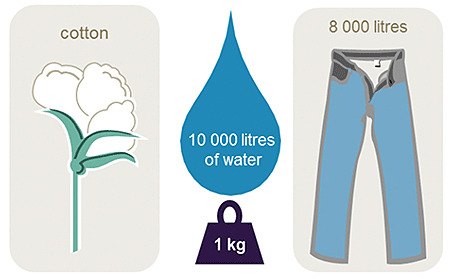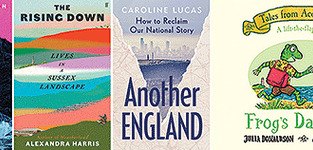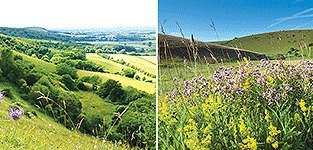Peronal Water Footprint
June 4th, 2018
Do you know how much water was used to grow your food and to produce your clothes and the things you buy? It is a surprising amount. You may not see this ‘invisible’ water, but it accounts for most of the water you use, far more than you use from the tap.
Our use of water is not limited to kitchens, bathrooms and gardens. On a daily basis, we contribute to the consumption of large quantities of water when buying various products, from the food we eat, paper and cotton to biofuel. This way, we indirectly affect water resources throughout the world.
By measuring water footprints, we can get a clear picture of how water is used in today’s consumer society, in the same way that carbon footprints measure contributions to climate change. Your water footprint is the amount of water you consume in your daily life, including the water used to grow the food you eat, to produce the energy you use and for all of the products in your daily life – your books, music, house, car, furniture and the clothes you wear.
Understanding our water consumption can help us provide a solution to one of our most pressing problems: making sure there is enough water to sustain all living things on our planet.
In our global economy, each consumer on average ‘eats’ as much as 5 000 litres of water every day (ranging from 1 500 to 10 000 litres per day, depending where you live and what you eat). Everything we use or consume has a water footprint, sometimes close to where we live but often in river basins far away, even in other countries.
Each ingredient in a product may come from a different place. Take, for example a cookie, which might have wheat from Canada, sugar from Brazil, vanilla from Madagascar and eggs from the local farmer. This one cookie is consuming and polluting water from a number of river basins, in countries around the world.
Water is a renewable, but finite, resource. There is the same amount on earth today as there was when the dinosaurs roamed. As our population grows, pressure on our limited, available supply is mounting. This is exacerbated by pollution and the fact that there are seasonal and geographic differences in the amount of water available. Today, in many locations, we are using more fresh water than the earth’s natural limits can sustain.
What you can do
We can all make a positive contribution to solving the water crisis.
Take a look at our footprint calculators to find out what in your daily life most affects your water footprint. You can do a quick calculation, or continue to the extended calculator if you want to find out more.
Then, takes steps to reduce your water footprint or support activities that help others make water use more sustainable. Your choices can improve living conditions and protect plants and animals that depend upon water, worldwide.
Making just a few changes can significantly reduce your water footprint. For example, the water footprint of 200 grammes of beef is the equivalent to 47 eight-minute showers and uses four times more water than the same amount of chicken meat. If a couple were to eat chicken instead of beef, they would reduce their water footprint by as much as 450 000 litres over a year.
Vegetables have an even smaller water footprint, as does tea compared to coffee. You do not necessarily need to become vegetarian – or never eat beef – yet, by varying your diet and choosing to eat food with a smaller footprint more frequently, and by choosing the products you buy wisely, you can make a large difference.
Personal water footprint calculator
Of course it is not all in your hands. The way the products we consume are produced also affects the water footprint. Encouraging companies to disclose the water footprint and the sustainability of their products will give you more information and will encourage responsible water use.
Letting your governmental representatives know that you care about water and want it to be used and managed in a sustainable way, where you live and everywhere in the world, is an important step toward being a good global water citizen.
Source: Water Footprint Network.
http://waterfootprint.org/en/resources/interactive-tools/product-gallery/
Our use of water is not limited to kitchens, bathrooms and gardens. On a daily basis, we contribute to the consumption of large quantities of water when buying various products, from the food we eat, paper and cotton to biofuel. This way, we indirectly affect water resources throughout the world.
By measuring water footprints, we can get a clear picture of how water is used in today’s consumer society, in the same way that carbon footprints measure contributions to climate change. Your water footprint is the amount of water you consume in your daily life, including the water used to grow the food you eat, to produce the energy you use and for all of the products in your daily life – your books, music, house, car, furniture and the clothes you wear.
Understanding our water consumption can help us provide a solution to one of our most pressing problems: making sure there is enough water to sustain all living things on our planet.
In our global economy, each consumer on average ‘eats’ as much as 5 000 litres of water every day (ranging from 1 500 to 10 000 litres per day, depending where you live and what you eat). Everything we use or consume has a water footprint, sometimes close to where we live but often in river basins far away, even in other countries.
Each ingredient in a product may come from a different place. Take, for example a cookie, which might have wheat from Canada, sugar from Brazil, vanilla from Madagascar and eggs from the local farmer. This one cookie is consuming and polluting water from a number of river basins, in countries around the world.
Water is a renewable, but finite, resource. There is the same amount on earth today as there was when the dinosaurs roamed. As our population grows, pressure on our limited, available supply is mounting. This is exacerbated by pollution and the fact that there are seasonal and geographic differences in the amount of water available. Today, in many locations, we are using more fresh water than the earth’s natural limits can sustain.
What you can do
We can all make a positive contribution to solving the water crisis.
Take a look at our footprint calculators to find out what in your daily life most affects your water footprint. You can do a quick calculation, or continue to the extended calculator if you want to find out more.
Then, takes steps to reduce your water footprint or support activities that help others make water use more sustainable. Your choices can improve living conditions and protect plants and animals that depend upon water, worldwide.
Making just a few changes can significantly reduce your water footprint. For example, the water footprint of 200 grammes of beef is the equivalent to 47 eight-minute showers and uses four times more water than the same amount of chicken meat. If a couple were to eat chicken instead of beef, they would reduce their water footprint by as much as 450 000 litres over a year.
Vegetables have an even smaller water footprint, as does tea compared to coffee. You do not necessarily need to become vegetarian – or never eat beef – yet, by varying your diet and choosing to eat food with a smaller footprint more frequently, and by choosing the products you buy wisely, you can make a large difference.
Personal water footprint calculator
Of course it is not all in your hands. The way the products we consume are produced also affects the water footprint. Encouraging companies to disclose the water footprint and the sustainability of their products will give you more information and will encourage responsible water use.
Letting your governmental representatives know that you care about water and want it to be used and managed in a sustainable way, where you live and everywhere in the world, is an important step toward being a good global water citizen.
Source: Water Footprint Network.
http://waterfootprint.org/en/resources/interactive-tools/product-gallery/
Comments (0)
No comments have been submitted yet.Why not be the first to send us your thoughts
Leave A Comment
Thank you for your comments, they will appear shortly once approved.
Recent Posts
Have You Seen...






